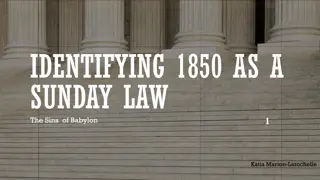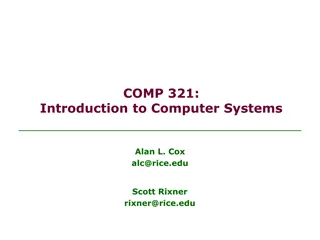
Document Vectors and Similarity in NLP
Explore the concept of document vectors and similarity in Natural Language Processing (NLP), including the Vector Space Model, representing text using vectors and matrices, and calculating relevance using vector similarities. Learn how to determine document similarity and relevance in information retrieval tasks.
Download Presentation

Please find below an Image/Link to download the presentation.
The content on the website is provided AS IS for your information and personal use only. It may not be sold, licensed, or shared on other websites without obtaining consent from the author. If you encounter any issues during the download, it is possible that the publisher has removed the file from their server.
You are allowed to download the files provided on this website for personal or commercial use, subject to the condition that they are used lawfully. All files are the property of their respective owners.
The content on the website is provided AS IS for your information and personal use only. It may not be sold, licensed, or shared on other websites without obtaining consent from the author.
E N D
Presentation Transcript
Text Similarity The Vector Space Model
Vectors, Matrices, and Tensors X = <x1, x2, , xn>: a vector of n dimensions. x1, , xncan take either binary values {0, 1}, or real values Vectors and matrices provide a natural way to represent the occurrence of words in a document/query. In text analysis, n is usually the size of the vocabulary, so each dimension corresponds to a unique word X can be used to represent a document, or a query, or So xiindicates either whether the i-th word in the vocabulary appears (binary value), or how many times does the i-th word appear (real value). The entire collection is thus represented as a matrix. How?
Example of Document Vectors Doc 1= information retrieval Doc 2 = computer information retrieval Doc 3 = computer retrieval information, retrieval, computer 1 1 0 Vocabulary: information, retrieval, computer Doc 1 = <1, 1, 0> Doc 2 = <1, 1, 1> Doc 3 = <0, 1, 1> D = 1 1 1 0 1 1 Question: Doc 4 = retrieval information retrieval ?
Documents in a Vector Space Doc 1= information retrieval Doc 2 = computer information retrieval Doc 3 = computer retrieval Term 1: information Doc 1 Term 2: retrieval Vocabulary: information, retrieval, computer Doc 1 = <1, 1, 0> Term 3: computer
Relevance as Vector Similarities Term 1: information Doc 1= information retrieval Doc 2 = computer information retrieval Doc 1 Doc 3 = computer retrieval Which document is closer to Doc 1? Doc 2 or Doc 3? Doc 2 Term 2: retrieval What if we have a query retrieval ? Doc 3 Term 3: computer
Document Similarity Used in information retrieval to determine which document (d1 or d2) is more similar to a given query q. Documents and queries are represented in the same space. Angle (or cosine) is a proxy for similarity between two vectors
Distance/Similarity Calculation The similarity/relevance of two vectors can be calculated based on distance/similarity measures S: X, Y (0, 1) X: <x1, x2, , xn> Y: <y1, y2, , yn> S(X, Y) = ? The more dimensions in common, the larger the similarity What about real values? Normalization needed.
Similarity Measures The Jaccard similarity (Similarity of Two Sets) |? ?| |? ?| ??????? ?,? = D1 = information retrieval class D2 = information retrieval algorithm D3 = processing information What s the Jaccard similarity of S(D1, D2)? S(D1, D3)? What about D3 = information of information retrieval
Similarity Measures Euclidean Distance distance of two points n D(X,Y)= (x1-y1)2+(x2-y2)2+...+(xn-yn)2= (xi-yi)2 i=1 Z X Y
Similarity Measures (Cont.) Cosine similarity: similarity of two vectors, normalized x1y1+ x2y2+...+ xnyn x1 n xiyi cos(X,Y)= 2= i=1 2+...+ xn 2 y1 2+...+ yn n n 2 2 xi yi i=1 i=1 X Which one do you think is suitable for retrieval? Jaccard? Euclidean? Cosine? Y
Example What is the cosine similarity between: D= cat,dog,dog = <1,2,0> Q= cat,dog,mouse,mouse = <1,1,2> Answer: 1 1+2 1+0 2 12+22+0212+12+22= 3 5 6 0.55 ? ?,? = In comparison: ? ?,? = 1 1+2 2+0 0 12+22+0212+22+02= 5 5 5=1
Quiz Given three documents D1 = <1,3> D2 = <10,30> D3 = <3,1> Compute the cosine scores (D1,D2) (D1,D3) What do the numbers tell you?
Answers to the Quiz (D1,D2) = 1 one of the two documents is a scaled version of the other (D1,D3) = 0.6 swapping the two dimensions results in a lower similarity
Quiz What is the range of values that the cosine scores can take?
Answer to the Quiz Mathematically, the cosine function has a range of [-1,1] However, when the two vectors are both in the first quadrant (since all word counts are non- negative), the range is [0,1] For word embeddings, the range is [-1,1] (since the values don t have to be non- negative)










